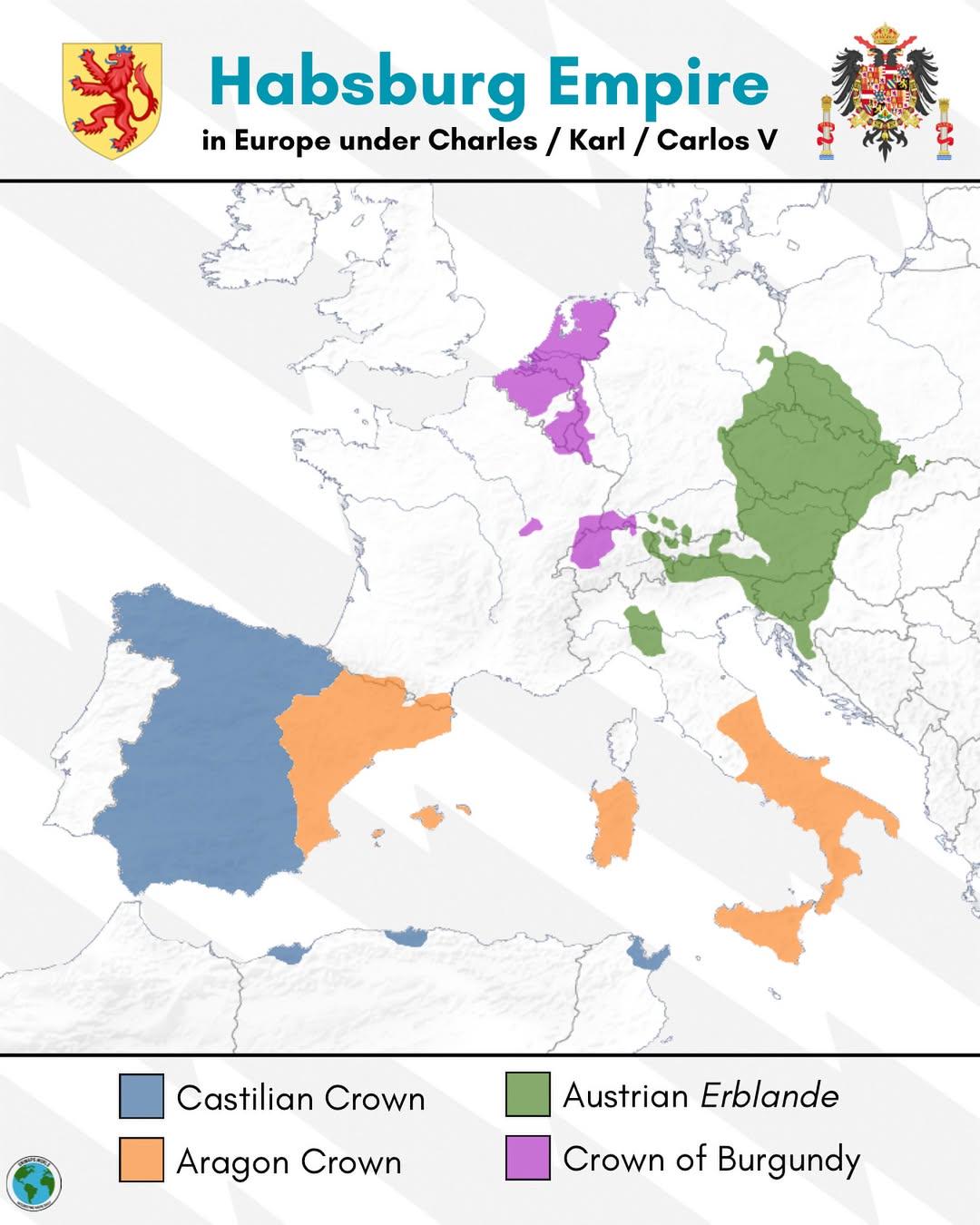Habsburg Empire Map of Europe under Charles V


Alex Cartwright
Senior Cartographer & GIS Specialist
Alex Cartwright is a renowned cartographer and geographic information systems specialist with over 15 years of experience in spatial analysis and data...
Geographic Analysis
What This Map Shows
The map titled "The Habsburg Empire in Europe under Charles V" provides a detailed visualization of the vast territories controlled by the Habsburg dynasty during the reign of Charles V, who ruled from 1519 to 1556. This significant historical figure presided over an empire that spanned various regions across Europe, including modern-day Spain, the Netherlands, Italy, and parts of Central Europe. The map illustrates not just the borders of these territories but also highlights the political complexity and cultural diversity that characterized the empire at its zenith.
Deep Dive into the Habsburg Empire
The Habsburg Empire was one of the most influential empires in European history, known for its strategic marriages and territorial expansions that created a complex web of governance and culture. Charles V, as Holy Roman Emperor, ruled over an extensive realm that included the Spanish Empire, which was emerging as a global power due to its colonies in the Americas. Interestingly, the map encapsulates the dual nature of Habsburg rule, showcasing both the central European territories and the sprawling Spanish lands.
One of the fascinating aspects of the Habsburg Empire was its administrative diversity. The empire was not a homogenous entity; it consisted of numerous distinct regions, each with its own laws, customs, and languages. For instance, the regions of Flanders and Brabant in modern-day Belgium were economically vibrant and influential in trade, while the Kingdom of Hungary was marked by its unique cultural identity and struggles against Ottoman incursions.
Moreover, the Habsburgs were adept at managing these varied territories. They employed a system of local governance while maintaining overarching control through appointed officials and regional governors. This method allowed for a degree of autonomy, fostering loyalty among local populations while ensuring that the emperor’s authority remained intact.
During Charles V's reign, the empire was also marked by significant conflicts, notably the Protestant Reformation, which began in the early 16th century. The map serves as a backdrop to these tumultuous times, revealing the regions affected by religious strife. The division between Catholic and Protestant areas became increasingly pronounced, ultimately leading to the Thirty Years' War in the following century. Charles V’s attempts to consolidate power were often met with resistance from these burgeoning Protestant movements, creating a landscape of tension and conflict that would shape European politics for generations.
Regional Analysis
Looking at the map, it becomes clear that the Habsburg Empire was a patchwork of regions with varying degrees of loyalty and cultural identity. In the western parts, such as the Spanish territories, there was a strong sense of Habsburg loyalty, bolstered by the wealth generated from New World colonies. In contrast, the northern regions, particularly the Low Countries, displayed a more complex relationship with Habsburg rule. While economically prosperous, they were also centers of burgeoning nationalist sentiment and Protestantism, leading to the Eighty Years' War against Spanish rule.
In Central Europe, the map illustrates the Habsburg influence over territories like Bohemia and Austria. These areas were culturally rich and often acted as the heartland of Habsburg power. However, the ongoing threat from the Ottoman Empire loomed large over Hungary and the Balkans, which were often the battlegrounds of conflict. The map subtly hints at the geopolitical tensions that existed along these borders, which would have lasting effects on European history.
Significance and Impact
Understanding the Habsburg Empire under Charles V is crucial for grasping the broader historical context of Europe during the 16th century. The empire set the stage for future political and religious dynamics that shaped the continent. The interplay between centralized power and local governance showcased by the map illustrates how empires can evolve and adapt to local circumstances.
Today, the legacy of the Habsburg Empire is still felt in the cultural and political landscapes of Europe. The historical divisions established during this era have influenced modern national identities and conflicts. Moreover, as we consider current trends in European unity and nationalism, the map serves as a reminder of the complex histories that underpin contemporary geopolitics.
In conclusion, the map of the Habsburg Empire under Charles V is not merely a representation of borders but a window into a transformative period in European history, marked by cultural diversity, political strife, and a legacy that continues to resonate today.
Visualization Details
- Published
- October 7, 2025
- Views
- 50
Comments
Loading comments...